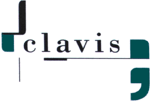
Usage examples
The ercato programming model encourages
an iterative development style. Focus on one problem at a
time. When one aspect is finished it is easily integrated
into a changing environment. Examples?
Assume you want to add business methods, data fields
or constraints. Then add some lines of XML to an
ercaton and possibly add some Java code, too. Now just copying
the changed ercaton and possibly the changed jar archive will
do the job. It is that easy. The J2EE application needs no
redeployment and no interruption of service is going to occurr
(the copy operation is transaction-safe).
Assume you require another column (or table)
in your database scheme, e.g., for a query
operation. Then you only need to add an XML-tag to one (index-)ercaton
and one XML-attribute to one (base-)ercaton. That is it. The
content of the new column is now even going to reflect the
production data which existed before and no interruption of
service is going to occur.
Assume you frequently change the business logic
and do not want to update the user interface.
Then alternatively you may create a style sheet or customize
the ercatoJ standard web style sheet. You do this once forever.
Possibly combined with your JSPs you end up with a user interface
which stays in sync with the business logic and provides support
for viewing, editing, navigation and complex search.
 “Ercatons
were easy to use and breathtakingly efficient. Once you
get the idea you wonder how you ever worked without it.” “Ercatons
were easy to use and breathtakingly efficient. Once you
get the idea you wonder how you ever worked without it.”
Dr. Ralf Marsula
Clavis GmbH, Bremen, Solution Partner SAP
|

